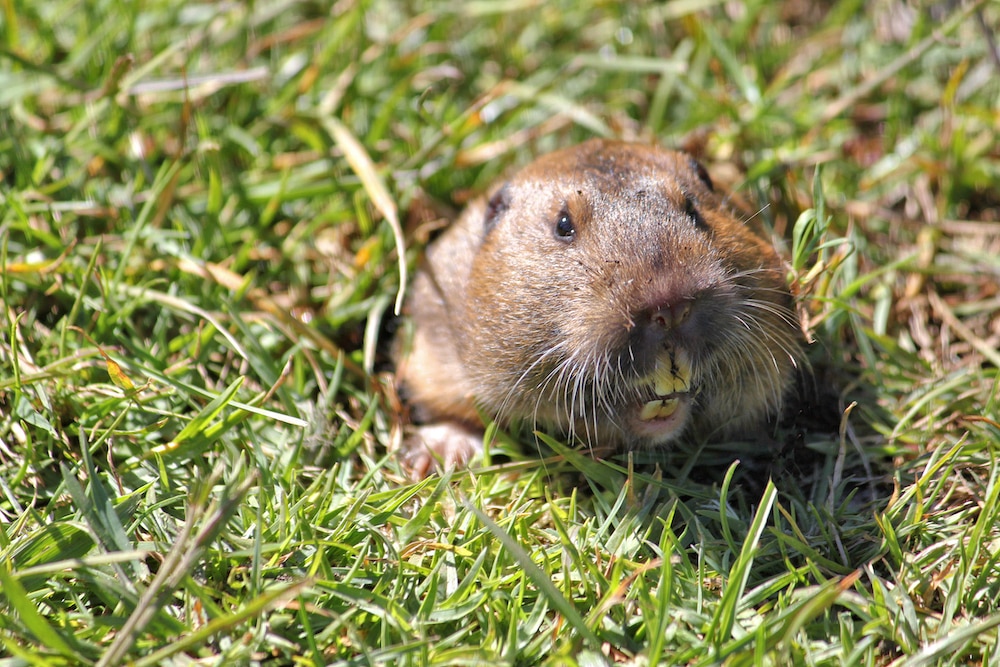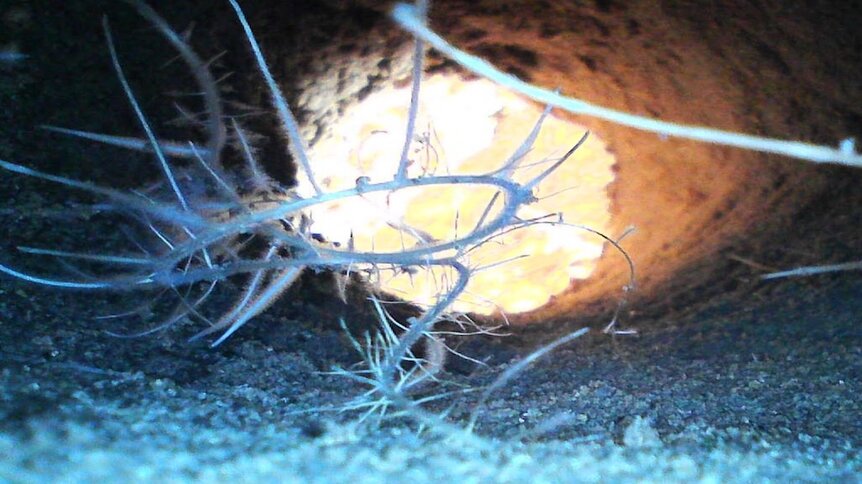Create a free profile to get unlimited access to exclusive videos, sweepstakes, and more!
Pocket gophers may be the first non-human mammals to develop farming
Why search for food if you can grow it at home?

In 2010, John and Molly Chester moved to an abandoned farm in California and set upon a journey to transform it into a self-sustaining ecosystem. That journey lasted nearly a decade and culminated in a documentary about their experience called The Biggest Little Farm. The couple endeavored to build their farm on the principle of biomimicry, in which they made every effort to manage the land using processes found in nature as opposed to the strategies employed by most modern farms. Things didn’t always go as planned and they often had to course correct in order to keep the farm afloat. Had they known it at the time, they might have learned something about how to sustainably farm food crops from an animal often regarded as a pest: the pocket gopher.
In reality, pocket gophers aren’t pest animals. They spend most of their lives several feet underground digging complex tunnel systems in the pitch dark. On the rare occasion that people encounter them, they often believe the gophers are a threat to their crops, pulling down plants through the soil like something out of Peter Rabbit, but that couldn’t be further from the truth. Venturing to the surface is most often done to pile up dirt carved from the earth as they continue tunneling. It’s something they try to avoid as it's when they’re at the greatest risk of predation. Instead, pocket gophers gain most of their energy from roots in the soil as they’re tunneling.
Incredibly, a new study suggests that instead of constantly searching for food, pocket gophers are actually managing the root systems in their tunnels and farming them. While farming has been observed in some insect species, this marks the first time a non-human mammal has been seen farming. Francis “Jack” Putz and Veronica Selden, both from the Department of Biology at the University of Florida, carried out the study which was published in the journal Current Biology.
Selden was a student who had studied under Putz in a handful of classes but wanted to get her hands dirty in an independent research project. Together, the two of them brainstormed animals which might be interesting to study and settled on pocket gophers, which are abundant on a nearby land trust in Gainesville, Florida.
“We got shovels and metal rods to find the tunnels, but couldn’t make that work because our gophers’ tunnels are so deep that you can’t feel them,” Putz told SYFY WIRE.
That’s likely because the soil in the area is so sandy that shallow tunnels run the risk of collapsing. Even finding the tunnels took some creativity and a willingness to put in the backbreaking work of digging. The energy cost of finding the tunnels underscored the question Selden and Putz wanted to answer: How do pocket gophers balance their energy requirements with the comparatively expensive activity of tunnel digging?
“We dug down and we found a tunnel. It took a lot of work. Digging is energetically expensive, it’s 300 to 3000 times more costly than walking on the surface. When we got down to the depth of the tunnel, we realized we were well below the depth of root proliferation. The roots were really scarce at that depth,” Putz said.
At about the same time, Putz had been dealing with a resource problem of his own. Roots had broken into a sewer line at his home, plugging up the plumbing and causing no small amount of distress. That’s when it hit them, between bouts of back-breaking work digging trenches looking for gophers, that the tunnels they were seeking were strikingly similar to a sewer line.
“The tunnels are round, deep, dark moist, and it turns out the gophers spread their feces and urine around, so it’s got nutrients like in a sewer line. So, we thought maybe the roots were growing into the tunnel,” Putz said.
Getting eyes inside a tunnel, even after they had found one, turned out to be more difficult than finding them in the first place. Once they’d found a suitable location and blocked it off, the gopher’s dug around their barriers and refilled the tunnels. That’s because pocket gophers are incredibly sensitive to any breach in their tunnel system. A breach usually means a predator has made its way inside and the gophers’ best defense is to block it off.
Eventually, Selden and Putz took a metal barrel, cut off the top and bottom and used it to enclose a section of tunnel completely. That worked, and they were able to get a camera inside to look around. Using this method, they were able to sequester 12 different sections of tunnel, each of which were created by a different gopher. They found in each case that the roots were indeed growing into the tunnel. In some cases, they were growing like mad, in much greater numbers than was expected or observed in the surrounding soil. Researchers believe the comparatively high root growth is in response to the spreading of urine and feces, but that’s only a part of the story.
“There’s a fertilization effect, but there’s also a cultivation effect from aerating the soil. Down at the depths of the tunnel the soil is fairly compacted which reduces rates of root growth. By excavating, they’re making the conditions better for root growth. The other thing is pruning, which stimulates production of new roots. Those three activities are what constitutes their farming behavior,” Putz said.
When pocket gophers bite into a root, it branches and makes replacement roots. Those new roots are more easily digestible to the gophers. By strategically eating roots in their tunnels, they send signals to the plants that they should grow even more roots, thereby providing another meal down the road.
There’s some debate about if what they’re doing can be defined as farming. Typically, people think of farming as an activity which manages plant species from seed to harvest with a certain amount of intention. That type of agriculture tends to arise in areas with seasonal growing schedules. However, even among humans, there are parts of the world with year-long growing seasons where fruit trees and other plants are managed without humans having intentionally planted them. By that definition, what pocket gophers are doing pretty closely resembles what humans do to manage and farm plants in at least some parts of the world.
“Everyone accepts that they are agricultural engineers, they’re tilling fields and fertilizing them and manipulating plants, but a lot of people are hung up on the fact that they don’t actually plant the seeds. These savannas are dominated by perennial species, not by annuals. The same plant is there year after year. The gophers are acting like tropical forest farmers, managing what they have.”
There’s a lot more to learn. The study estimated that pocket gophers get between 20% and 60% of their energy requirements from farming roots, but that might be a low estimate. Because the sample size is low and because they were only able to isolate parts of the tunnels, it’s possible that other areas have significantly more root growth than was observed. Alternatively, or perhaps in addition, pocket gophers might be eating fungal material which likewise grows underground.
One thing is absolutely clear, the world beneath our feet is a lot more complex than we previously supposed, and it has a lot to teach us if we’re only willing to dig for it.



























